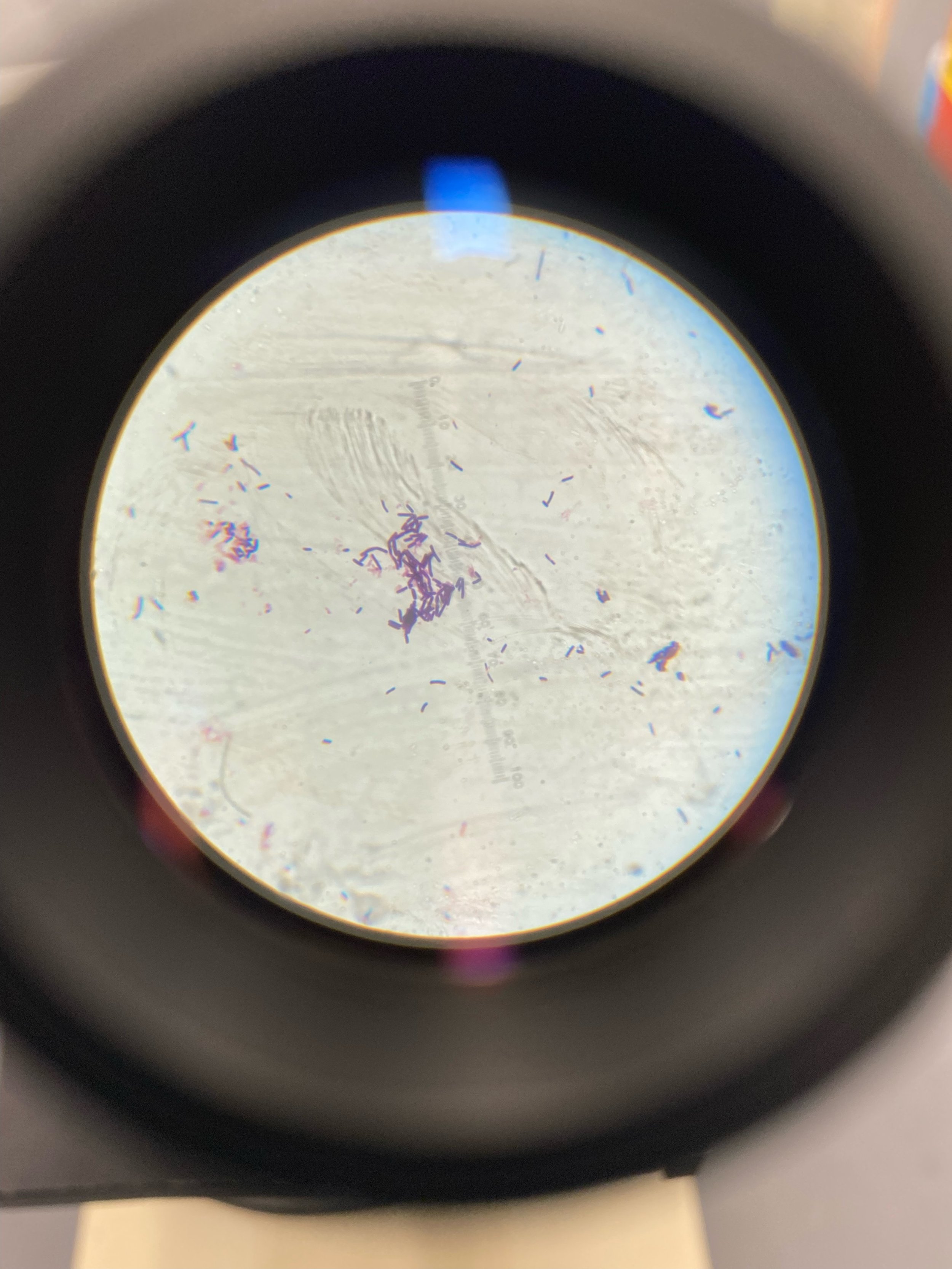Warming up with Arctic Bacteria
Madelyn Driscoll '23 classifys "O-152" as Rhodococcus fascians. Source: Provided by Madelyn Driscoll '22
Where snow commonly touches the surface of the ground, there remains a certain plant-attacking bacteria in Canada’s arctic landscape, which has been reported in less than 23 U.S. states.
After Marist medical biology student Tyler VanOrden ‘21 discovered this bacteria in Northern Canada, the microbe was identified a year and a half later by Madelyn Driscoll ‘23 as rhodococcus fascians, a rod-shaped microbe known as a plant pathogen.
VanOrden brought the seemingly mysterious bacteria back to Marist to study its properties. Once the student and the bacteria made their way to Poughkeepsie, he isolated the bacteria from a polar sample that he later called “O-152.” Once the student graduated Marist in 2021, he handed off the project to Madelyn Driscoll ‘23 who only recently classified the microbe.
Rhodococcus fascians is a bacterium that lives on a plant’s vegetal tissues and causes leafy gall disease. Leafy gall disease forms on a plant and is generally near the surface of the soil. The bacteria causes a cluster of buds to closely form at the base of the plant that does not readily cause any harm to the plant but does give the plant an ugly appearance.
Before Driscoll ditched this microbe's catchy nickname for a more serious one, she was just a mere medical technology major drawing blood on other classmates in her courses. And even before this, she was an incoming freshman in the biology department.
Instantly captivated by a visiting professor who came to speak in one of her freshman science classes, she was convinced enough to change her biology major. The professor spoke to her class about the medical technology major that the College of Science offers and the great success many students have in it. Little did she know, three years later, she would also be researching a new bacteria in the spring of 2022.
Now taking the reins on the project, Driscoll spent the entirety of the semester studying the characteristics and properties of this rhodococcus fascian microbe. Driscoll explains that she found that this bacterium can inhibit the growth of some human pathogens and is retesting the bacteria to see if it is an antimicrobial itself.
Some of the key tools Driscoll uses in the lab include DNA sequencing to identify the genes, mass spectrometry to analyze the mass-to-charge ratio, gram staining and a microscope to see the purple-stained bacteria in a high magnification.
Using the Gram-stain technique to distinguish the bacteria as either gram-positive or gram-negative, she was able to identify that this was a gram-positive bacterium. Since the bacteria presented as gram-positive, this told her that the peptidoglycan layer, which helps make up the cell wall, is thick.
A peptidoglycan layer functions to protect the cell wall from external stresses and a thick layer of this important substance can help scientists indicate the effective functionality of antibiotics.
Since the research project began, the MedTech student has enjoyed her research journey so far and wants to continue this project into the fall of 2022.
A microscopic image of Rhodococcus fascians. Source: Provided by Madelyn Driscoll '22
“I’m enjoying the process so far because I get to apply the skills I've learned in my classes to a project that actually means something,” she said. “This is something we could potentially do something with to help patients in hospitals.”
After working in the microbiology department with the Mid-Hudson Hospital this past summer, Driscoll has developed a love for microbiology. She has taken four microbiology related courses and has yet to get bored of this branch of science.
“Microbiology is so interesting because there are so many millions of microbes that can be investigated,” Driscoll said. “This can help highly susceptible patients in hospitals.”
Usually working alone in the general biology laboratory in the Allied Health building, Driscoll consults her advisor, Dr. Raymond Kepner, once a week to discuss her results and plan her next steps. Driscoll is just one of the few students who Kepner works with, but across the School of Science students are actively involved in research projects ranging from geohydrology to analytical chemistry.
Despite Driscoll’s ability to explain how and what she does in her research, there are many times where she has self-doubt and feels like she is in over her head.
“One time I was sterilizing bacteria in an autoclave and when I took it out, I realized I killed all the bacteria,” she recalled. “Another time I realized I had to start adjusting the temperature conditions because the bacteria weren’t growing in the warmer environment because it’s used to the colder conditions.”
This project means more to Driscoll than what it might show as a grade on her transcript. To her, she is applying basic skills to understand vital things found in nature that could specifically affect humans.
While there are no reported cases of this plant-pathogen directly affecting humans, it may affect the colorful herbaceous perennials, vascular non-woody plants, in the garden before they can rest in a vase on the kitchen counter. Some of these affected plants include hardy mums, Montauk daisies and the Giant fleece flower.
While Driscoll still has more to learn about herself as a researcher and more about this now identified gram-positive bacteria, she hopes to continue this next year as her honors thesis project and present it to other students and faculty. Beyond that, she has considered venturing out to work in a private research facility or a smaller research department of a hospital.
“I hope my research inspires people to be open minded,” she said. “There are a lot of things going on in the world that are a lot smaller than what they can see.”

